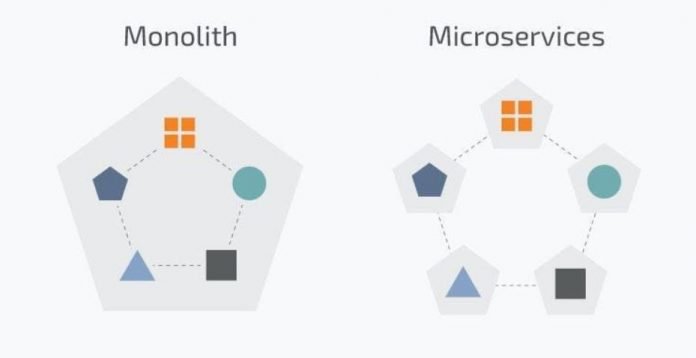Microservices represent a crucial software trend today. They can enterprise IT function and digital transformation of almost every business. They are a fundamental base in how tech approaches software development. These applications have been applied by world companies like Qulix, Netflix, Google, Amazon, etc.
What is a microservice architecture?
They are used widely to develop large, more complex applications, like Best Proxy Servers. They work as a network of small services that work in unison for more extensive, application-wide functionality.
Microservices are a typical architectural style used to create a single application as a set of smaller services. Thus, each service is responsible for its own process. They communicate between each other and with customers. Such applications use lightweight protocols, often through messaging or HTTP.
Advantages of microservices application
- since this type of architecture communicates by messaging, they’re not dependent on the one code. Thus, engineers can use the programming language that they like. This can improve the overall developing process, with lower costs and fewer bugs;
- since the team is working on smaller applications, the projects tend to be more agile. They iterate much faster, address new updates and features in a shorter time, and fix bugs almost immediately;
- they lead to containerization, just like cloud platforms. They represent small applications with a small set of dependencies. Developers can scale your services horizontally using features like Docker without writing a new code.
What is monolithic architecture?
Monolithic architecture is thought to be a traditional way of building software applications. It is built as a single and impartible unit. As a rule, such a tech solution is made up of a client-side interface, a server side-application, and a database. Since the monolithic application is unified, all these functions are served in one place.
Also, they have one vast code base and limited modularity. If specialists want to change or update something, they use the same code base, making changes in the whole stack.
Advantages of a monolithic application
- they have less cross-cutting concerns that can affect the entire application. This includes logging process, handling, caching, and performance monitoring;
- easier checkout and testing process. Microservices architecture has complex debugging. Monolithic applications are a single indivisible unit, and they are much easier to test;
- monolithic is a regular way of building tech applications. So any developer has the appropriate knowledge and capabilities to create a monolithic application.
How to choose microservices or monolithic depending on your needs
Let’s start with a monolithic application. It is easy to create, test and deploy. With everything going through one place, cross-cutting concerns like logging and handling are easily addressed. This is due to the fact that memory, space and resources are shared. The monolithic architecture comes with performance pros since shared-memory access is much faster than inter-process communication (ICP).
A typical situation where to start with a monolith is:
- The team is small and at a beginning stage. A foundation team of about 2 to 5 developers will find a monolith architecture ideal to start with;
- You are going to create a proof of concept. The final product is thought to pivot and evolve as you figure out what will be useful to the customers. A monolith is a perfect point for this situation as it offers rapid product iteration;
- You don’t want to build a scale and complex product. When the desired application doesn’t require scalability and complexity, a monolith architecture is the best option for you.
In a microservices application, each process functions separately. Deployment, updating, testing and scaling is managed within the scope of each small service. Although they don’t reduce the complexity, they can make it more visible and manageable. Here, you can read more about the challenges and advantages of this type of architecture.
With companies like Airbnb, Google, Disney and Amazon, microservices have gained popularity. A typical scenario for using more complex architecture is:
- during the foundation phase, the borders should be clear, which is also known as bounded context. This feature allows developers to use the language most efficient for each domain;
- complex requirements, as they provide maximal agility, speed and scalability. If you want to create something comlex with extra features, microservices can cater specifically to each service;
- an experienced team is crucial. To use these application architecture, you’ll need an expert team with the best experience in microservices or distributed design. For instance, DevOps are perfect developers as they are tightly coupled with this architecture;
- microservices are perfect for a vast application with various modules and user experience. This leads to high complexity and makes scaling and adding new capabilities easier and faster.




